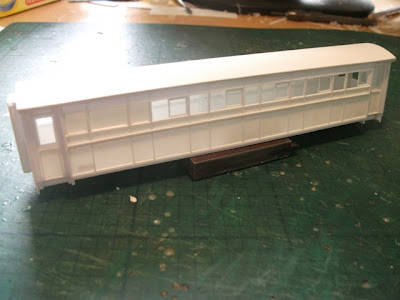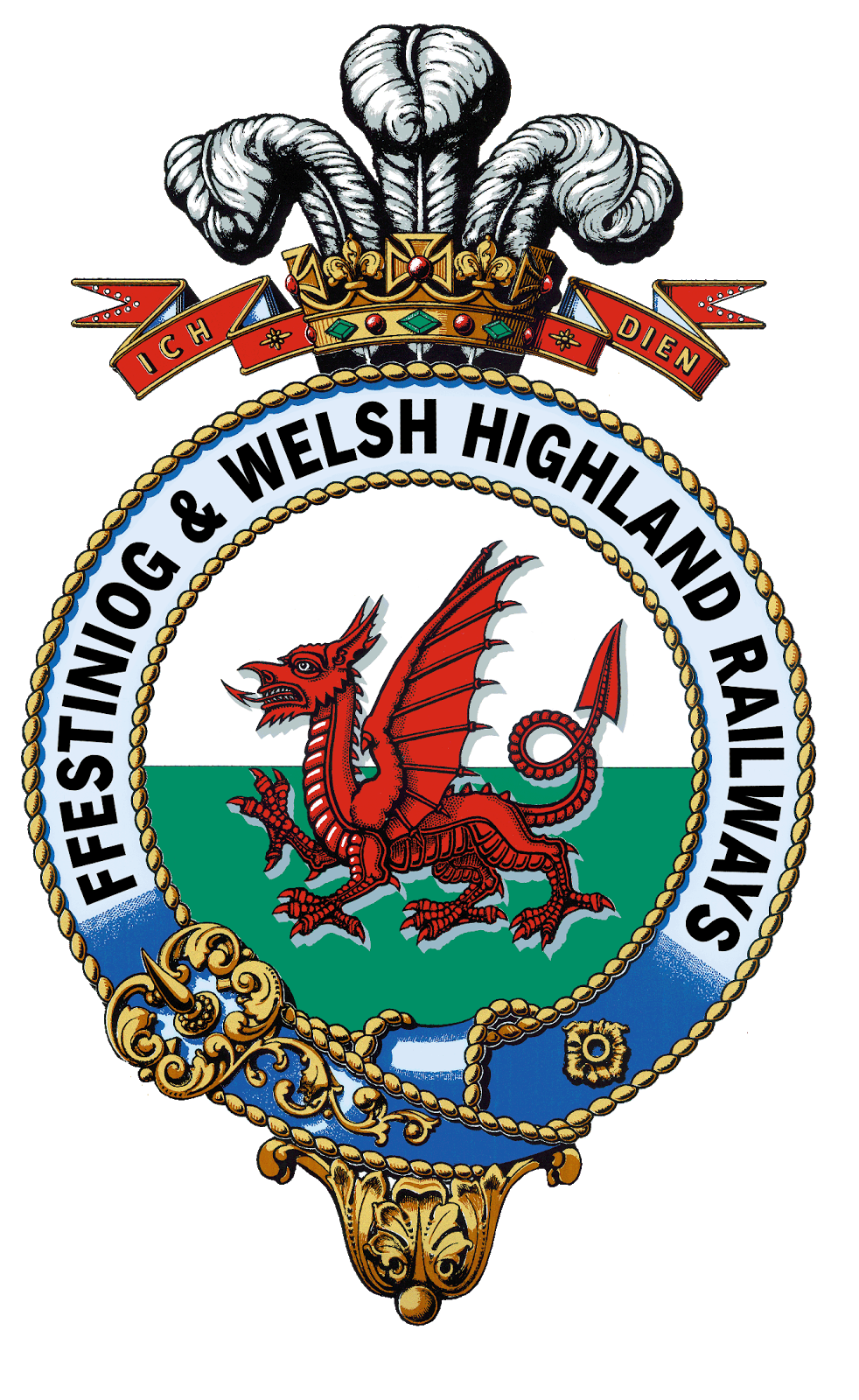It is my solemn duty to report that one of our longest serving locomotives has had to be retired.
As you may have read on the blog, last weekend Blanche suffered a catastrophic failure while operating on
Dduallt at
Railex which has proved to be terminal.
She shed the front crank on her 'clock side' and spent the rest of the exhibition as a cripple in the headshunt at the bottom end of Dduallt station - a location the real locomotive is rather familiar with....

She was taken into the works by Himself this week to assess the damage.
This Blanche is a Parkside Dundas whitemetal kit running on an Ibertren chassis with our own outside frame conversion, which involved fitting new axles and homemade cranks. The model is now best part of 20 years old and has most probably run hundreds of real miles in more than a hundred exhibition outings.
Although Himself was able to solder the crank back into position he discovered the reason for the original failure was that the gears (which drive both axles) are so worn they are prone to locking up and jumping teeth, putting out the quartering. The model runs forwards smoothly, but not in reverse.
So what to do?
Plan A was to see if it would be possible to change the gearwheels using donors from a spare Ibretren chassis, but that doesn't seem to be a goer. We could, of course, replace the whole chassis, although that would involve transplanting the whitemetal cylinder assembly and repeating the outside frame conversion.
It more or less means making another model.
So it's on to Plan B - and 'B' stands for Backwoods.
Five years ago Himself constructed a Backwoods Miniatures kit for Blanche but never managed to get it to run properly and it has remained 95% completed in the desk drawer ever since. The problem was with the motion locking up, possibly because of the compensating front axle which the kit is designed with.
Having since built a few Backwoods Garratts, the Darjeeling tank, Russell and Lyd, Himself feels ready to have another bash at Blanche.
(There's also a Linda kit lurking in the same drawer of doom!)
Performance was not the only issue with this kit, however.
In a rare blunder, which he freely admits, Pete McParlin designed Blanche's tender cab assuming it was the same length as Linda's. Wrong! Linda's tender was adapted from one of the old England locomotives, while Blanche's was a new build, and as a result, the tender supplied with the kit is too short.
The whitemetal tender which comes with the Parkside Dundas kit, however, is correct. Compare the two images below...


The Backwoods / Dundas combination is a pretty good mix aside from the whitemetal rivets on the tender which look rather obese compared to those on the locomotive.
After considering various options, including attempting to splice an extension into the brass tender, Himself has decided the best course of action is probably to file the rivets off the Dundas tender and replace them with resin transfer rivets and substitute the whitemetal roof for a brass one.
As for our old Blanche, she's heading for retirement as a static exhibit. Here's how all the
Bron Hebog team will remember her, captured while hauling one of her last trains around the spiral.

R.I.P. Ricket!






























































